How to apply liquid glass on the walls
What is the application of liquid glass and the main features of use, about the advantages and disadvantages of technology, how to prepare the surface to isolation, carrying out the main work, finishing the insulated surface of the cafenel.
Introduction of liquid glass
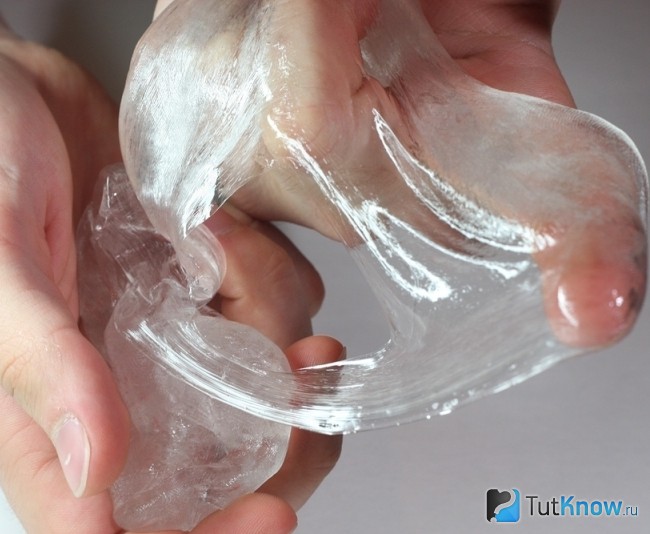
Silicate glue or, as they call it, liquid glass is prepared in the factory. The main component is a mixture of soda (potash) with silica dioxide. As a result, a white crystalline substance is obtained or transparent. There are several varieties of liquid glass: potash, sodium, potash sodium, sodium-potash.
Sodium variety is widely used in construction work. Usually use silicate solutions diluted with water. Silicate adhesive to the surface interacts with carbon dioxide, which is contained in the air and thus hardens. Wooden surfaces treated with liquid glass are protected from fungi and mold and, importantly, they have a fire-resistance.
The main tools for applying on the surface of the tree or cement-concrete is paint brushes or sprayer. When the sprayer is used as a tool of application, it is necessary to use an aqueous solution of silicate in combination of 1: 5.
The silicate layer is applied outside the wooden surface, gradually increasing it at the same time. A small surface made of wood is recommended to dip in a solution of liquid glass. Before you start laying the tile or plastering the walls, it is necessary to apply liquid glass to prevent the appearance of mold and fungus, as well as protection against mechanical damage.
Scope of use of silicate:
- Gluing porcelain, faience, glass surfaces;
- Waterproofing work;
- Primer surfaces: concrete, stone, posted;
- Lining linoleum, PVC tiles;
- Making maps for plumbing and cast iron pipes;
- Treatment of tree cuts after trimming.
The main characteristic of the liquid glass is its waterproofing properties. For this, the insulator is connected to cement or concrete solution in a ratio of 1:10. To increase the waterproof floors, it is recommended to fill them with an additional layer of glass, 3 mm thick.
When working on waterproofing of wells, a mixture of silicate with cement and fine sand is used. The well is pre-treated with an insulator, then a solution is applied. It is important to note that when applying a silicate coating, it is not necessary to wait for its complete hardening, since the glass-like surface does not contribute to a good adhesion with a primer or putty.
Waterproof plaster, which can be prepared independently: a combination of liquid glass with cement and sand in a 1: 2: 5 ratio.
Liquid glass is used for laying furnaces and fireplaces, for this prepare a solution in the ratio: 1 part of cement, 3 parts of sand and silicate in an amount equal to 1/5 cement-sand mortar, then water is poured.
The connection of liquid glass (1 part), hawked lime (1 part) and clay (1 part) makes it possible to glue the natural stone.
The heat-resistant mask cooked from liquid glass allows you to glue the door of the furnaces. Adding liquid glass in paint allows you to make a product resistant to all types of atmospheric influences.
Advantages and disadvantages of liquid glass for walls
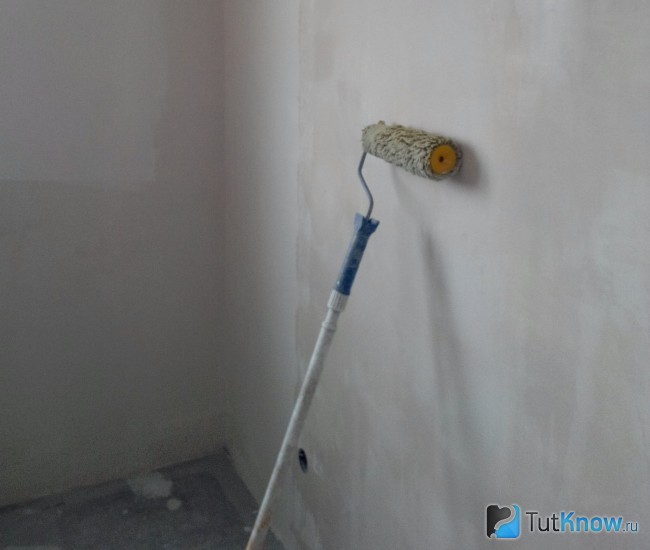
The application of liquid glass on the surface gives it the following advantages:
- Durability, because the coating with liquid glass gives the hardness material, and hence it increases its strength.
- Waterproof, since liquid glass has good water repellent properties. Having treated outside a wooden surface with a layer of silicate, for a long time to forget about its damage to moisture.
- Liquid glass as an antiseptic allows you to protect the surfaces from fungus and mold.
- Fire resistance, since the waterproofer is completely non-combustible material.
- Heat resistance: silicate can withstand heat treatment up to a temperature of 1000 degrees Celsius.
- Protection of the processed base from chemical influences.
- Environmental safety: silicate is safe for both human and environmental.
- Mud and water repellent properties.
- Ease of use: Silicat is easily applied to the surface with a brush or spray gun.
Liquid glass application technology
Silicate is not so difficult to carry out the waterproofing, as it may seem at first glance. But you will have to carefully study all the stages of work and stock the necessary tools.
Preparatory work
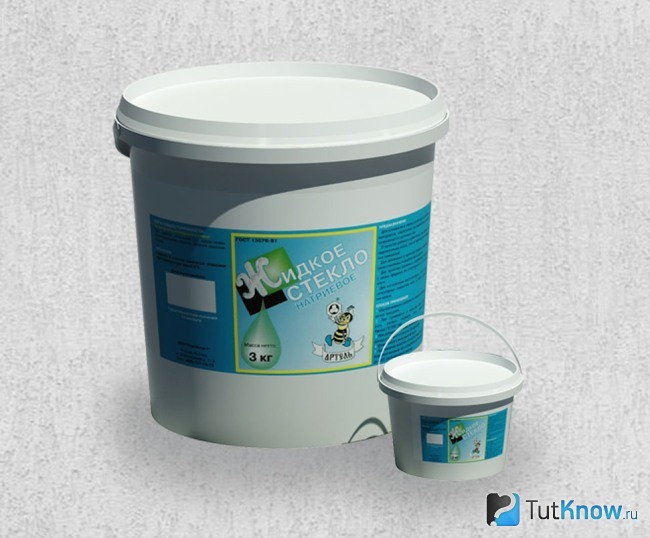
First of all, the room that needs to be treated with silicate glue, we clean from dirt, garbage, fungus and other contaminants. The surfaces that are wooden, before applying the silicate solution, it is necessary to lose the emery skirt.
Apply silicate glue with brush, brush or spacing, depending on the work performed. Despite the fact that liquid glass is a non-toxic substance, work must be carried out in the means of individual protection (glasses, gloves), and after their execution, the hand is thoroughly wash with warm water. Silicate glue is recommended to store in closed containers.
If all of the listed activities were performed, you can start forming a waterproofing layer.
Step-by-step instructions for applying liquid glass on the wall
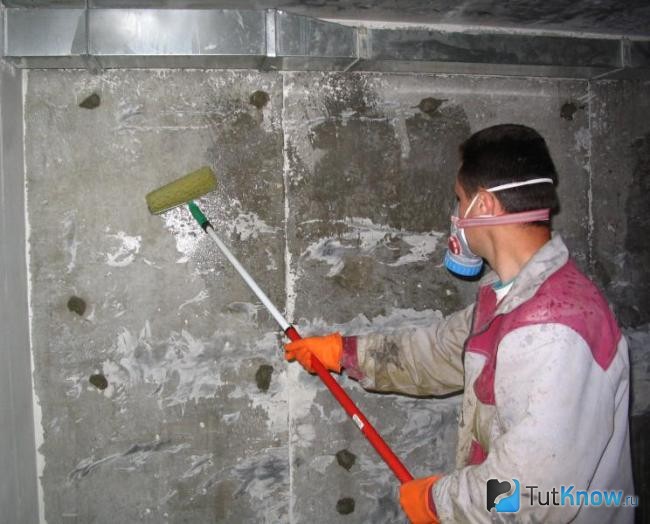
Proper compliance with the technology of preparing the solution is very important, as it affects the end result. If waterproofing of walls is needed with liquid glass, then for it, the connection of silicate and cement is used or concrete in a combination of 1:10. The resulting solution can be used as a waterproofing material in bathrooms, pools, basements, wells, which allows you to increase their service life. This is especially true for those regions where the level of humidity is very high.
If it is necessary to prepare acid-resistant cement, then it is necessary to mix liquid glass with cement in combination 1: 1. To increase the waterproofing properties of the pools, internal and outer treatment with liquid glass are produced. When internal processing, the material is applied to the walls of 2-3 layers with a brushes or a spray gun, which allows to increase the waterproofing properties of the pool. But there is also an external effect of groundwater into the pools, in which case it is treated with a solution of cement and liquid glass.
The work algorithm comes down to the following:
- Prepared waterproofing material is applied to the surface. It should be noted that all solutions consisting of liquid glass are very quickly solidified, so the application must be carried out quickly.
- Possessing such an opportunity like penetration into any irregularities and gaps, liquid glass for walls covers the treated surface completely, and it protects it from the harmful effects of water and air.
- To create a waterfrost layer, the base is covered with two layers of silicate adhesive, and each of them should dry well.
- After completing the application of liquid glass onto the walls of approximately a day, the surface can be placed or laying the tile.
The use of liquid glass not only increases the waterproofing properties of the surface, but also reduces the cost of work. Due to this, silicate solution is an indispensable material in construction.
Finish finish of the surface
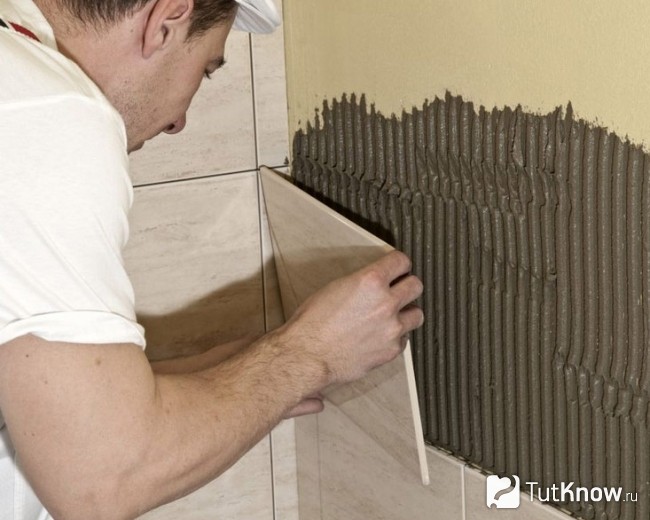
Now let's start the finishing processing of surfaces in the bathroom, namely cladding the walls of the cafenel. It performs 2 tasks at once: protective and decorative. That is, it provides protection of walls from moisture, damp, on the one hand. On the other hand, forms the appearance of the bathroom.
In finishing works, a variety of tiles can be applied. The tile is classified in five strength criteria, the fifth is the most durable, it is used to cover the floors, in those rooms where there is a large flow of people. For bathrooms in the walls of the walls are faced with a tile of the first or second degree of strength.
When choosing a tile, it is necessary to take into account the degree of its moisture absorption, therefore products with IA, IB, IIA, IIB icons are used.
Since the tile is diverse, then for compact premises it is recommended to take products of small sizes, which will allow them to harmoniously fit into the interior of the bathroom.
The products are more often square or rectangular, but there are polygonal, work with such a tile is complicated, but with it you can make various compositions. Choosing the form of the material, it is necessary to take into account the size of the room. With the help of a rectangular tile, which is stacked vertically, you can increase the height of the ceiling.
In the outdoor outlets, there are various monophonic matte and glossy tiles, as well as a tile with a pattern, various borders that allow you to make a complete composition. There is also a relief tile, which is recommended to lay on the floor, which will prevent the leg slide on the floor.
To fade the walls, the master needs such devices:
- Ruler, level to check the accuracy of lines;
- Special spatula with teeth, painting brush;
- Tiles or Bulgarian for tile cutting;
- For grouting, the seams are used with a rubber base;
- Grout for seams;
- The glue solution for fixing the tile;
- Plastics crosses to withstand distances between the seams.
Before starting the tile, it is necessary to draw a horizontal straight line through the entire room, which will help to put the products flawlessly smoothly.
- Products begin to lay below, usually from the second row, the first skipping.
- The cooked glue solution lubricates the treated surface, with a spatula with teeth.
- The tile is pressed against the wall not much, since any excessive force can lead to deformation.
- To comply with the uniformity of the seams between the tiles, plastic cross are used, they are removed until the glue is removed.
- If you need to put the tile in the corners or places where there are pipes, it must be cut. To do this, resort to the help of such a fixture, like a slab chores or Bulgarian.
- Periodically check whether the installation process is correct, using a level and plank, protruding tiles are pressed by a rubber hammer.
- The latter laid the bottom layer.
How to apply liquid glass on the walls - Look at the video:
As it was possible to make sure of the material, the coating of the walls with liquid glass is quite a real construction technology that is suitable for many types of rooms. It is performed quickly quickly, and under the condition of gentle care, an isolated surface will be able to serve not to serve as one dozen years.














